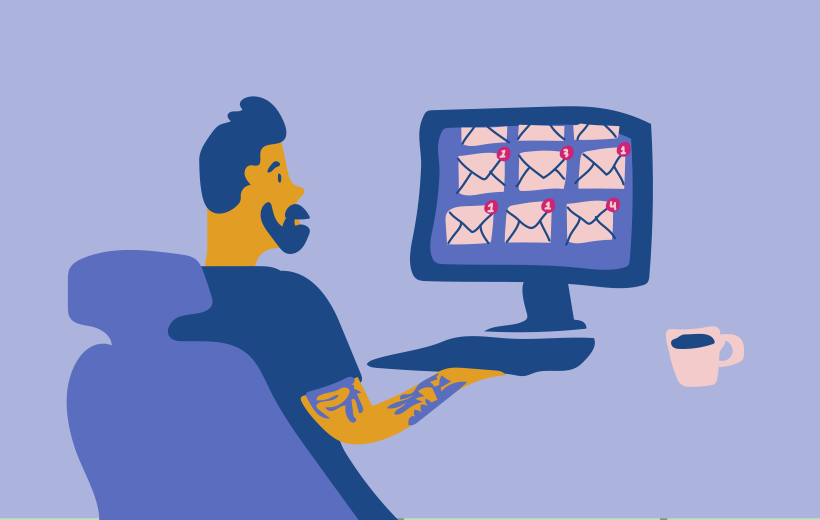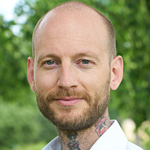Just Be: The Key to Transformation
By Lucas Henriksson • 2 min read

TO “JUST BE” may very well be one of the most challenging things we can do. Our attention is constantly pulled in different directions, asking us to become a better version of ourselves. We are sold the promise that if we just get this “last thing,” we will finally feel complete and satisfied. Of course, as most of us have experienced, this promise never lives up to our expectations. We feel satisfied for some time, but then again, this sense of “something is missing” creeps up on us. The repetition of this cycle can sometimes feel overwhelming, and we may feel like we want to “pull the plug,” disengage from society, turn off our phones, and go to a mountain retreat. Of course, for some of us, and if the conditions are right, that may be a good thing to do. However, for most of us, we need to stay where we are, with our responsibilities, to-do lists, bills to pay, and kids who need our love, care, and attention. The good news here is that we actually don’t need to stop doing all the things we are doing. What we need to do is actually be more interested in what we are doing!
A simple yet effective question I use in my own life when I feel I have too much on my plate and need a break, but simply have too many other things to take care of, is “How can I make this my practice?” For example, when I was studying and had a lot of reading assignments, I simply rested my mind in awareness for a few moments at the end of each page. It so turns out that if I read 50 pages, I have then practiced meditation for “short times, many times” 50 times! Even 15 years later, this habit has become second nature, so whenever I pick up a book, that last paragraph on each page is, in itself, a reminder to rest in awareness.
This can be applied in all areas of life, just ask that one question: “How can I make this my practice?” If you work on a computer, like me, and have a massive number of emails and messages to respond to each day, instead of treating it as this huge thing you need to get over with, use it to reconnect with awareness. Read the message, reply, and after clicking “send,” rest in open awareness for a few moments before responding to the next message. So, again, if you have 50 messages in your inbox, you will have practiced meditation for “short times, many times” 50 times! When this becomes a habit, not only will clicking “send” serve as a reminder to rest in awareness, but this daily task will feel lighter and become a source of well-being rather than a source of stress.
To just be does not mean to stop doing what we are doing. Continue doing what you are doing, but make it a support for recognizing awareness. Take some time to reflect on the things you need to do, the things you enjoy, and, as in the example of reading, how you can merge that activity with meditation. When we start doing this, even the most mundane tasks, like household chores, become meaningful, and the gap between our meditation practice and the rest of our lives lessens. To me, this is one of the most profound takeaways from Mingyur Rinpoche’s approach to meditation — that awareness is always present and can be recognized in each activity.
So, in my experience, there is nothing more valuable or meaningful than learning the art of just being. But remember, being doesn’t necessarily mean to stop doing.
November 2025

Lucas Henriksson first met Mingyur Rinpoche in India, in 2008. He spent the next three years pursuing a BA in Buddhist Philosophy and Tibetan language in Kathmandu. After his studies, he moved back to Sweden and spent more time in solitary retreats between 2012 and 2015. Lucas lives in the countryside of Sweden with Sofia and their three kids — Loa, Rut, and Siv. In his work for Tergar International, he writes content and curriculums for Vajrayana Online and Path of Liberation.
Learn meditation under the skillful guidance of world-renowned teacher Yongey Mingyur Rinpoche at your own pace.


Deadlines, competition, pressure — the concept of “burnout” to describe a sense of nervous exhaustion has been around since the 70’s, but never has the feeling of burnout been as prevalent as it is these days. In a situation that’s demanding too much of us, it’s natural to experience burnout. Still, there are certainly a…

“If we remember why we meditate and the possibilities that meditation offers us in this life, we will come back to the cushion easily and with enthusiasm. It is up to us to determine our own narrative — one that is alive and true for us.” — Tim Olmsted

“When you’re grounded amid others’ suffering, you can help them in a different way. It’s better for them—and for yourself. You’re not afraid of coming up against a person’s suffering, but you don’t merge and identify with it, so you’re free.” – Micael Inês
If you enjoyed reading our articles, please join our mailing list and we’ll send you our news and latest pieces.